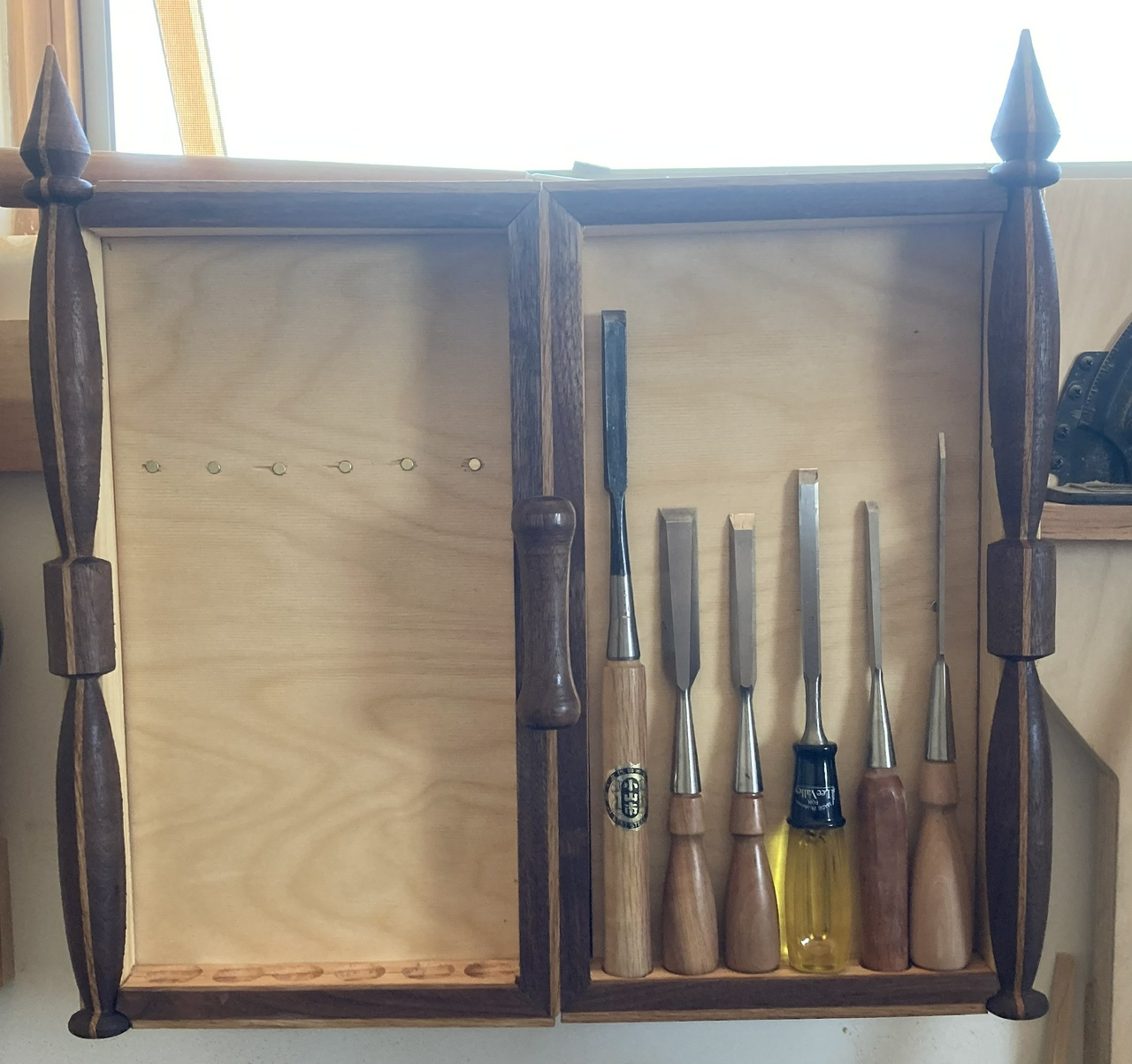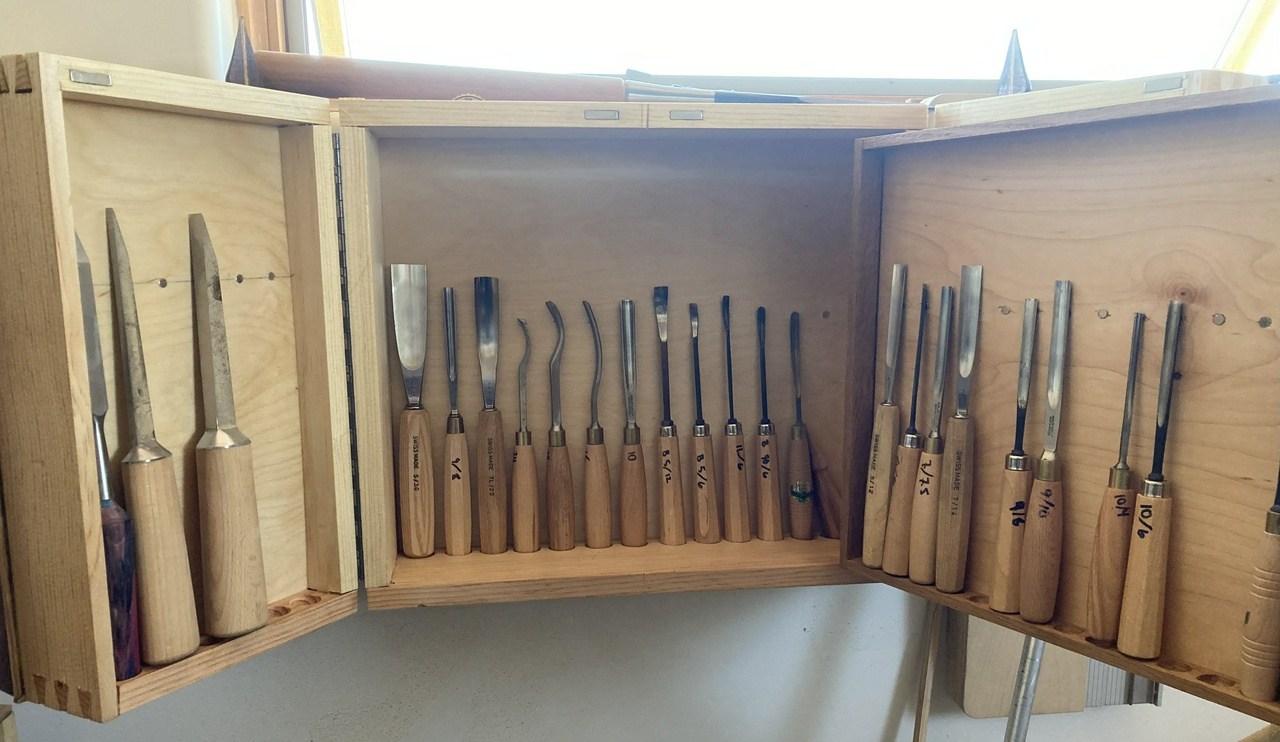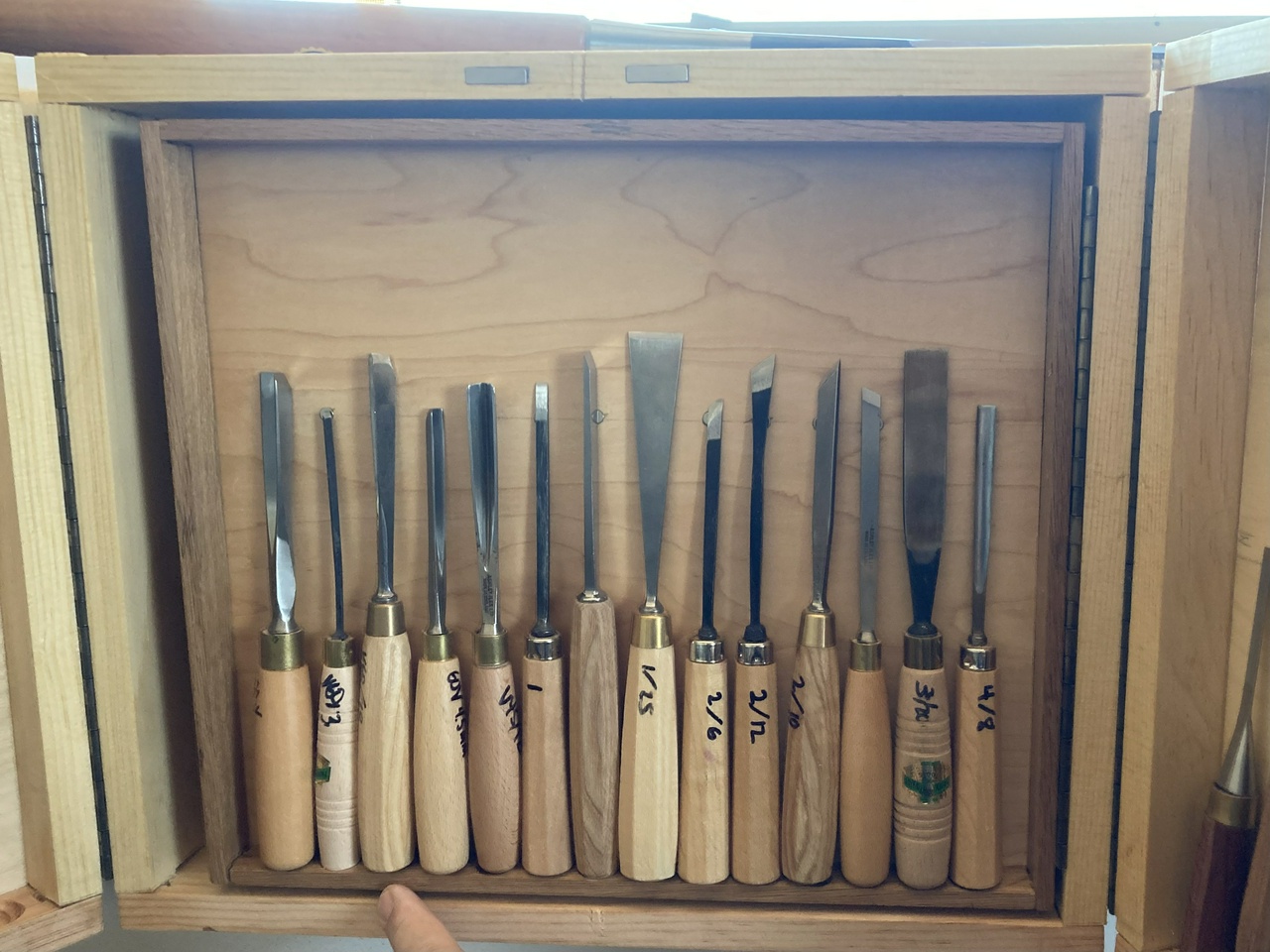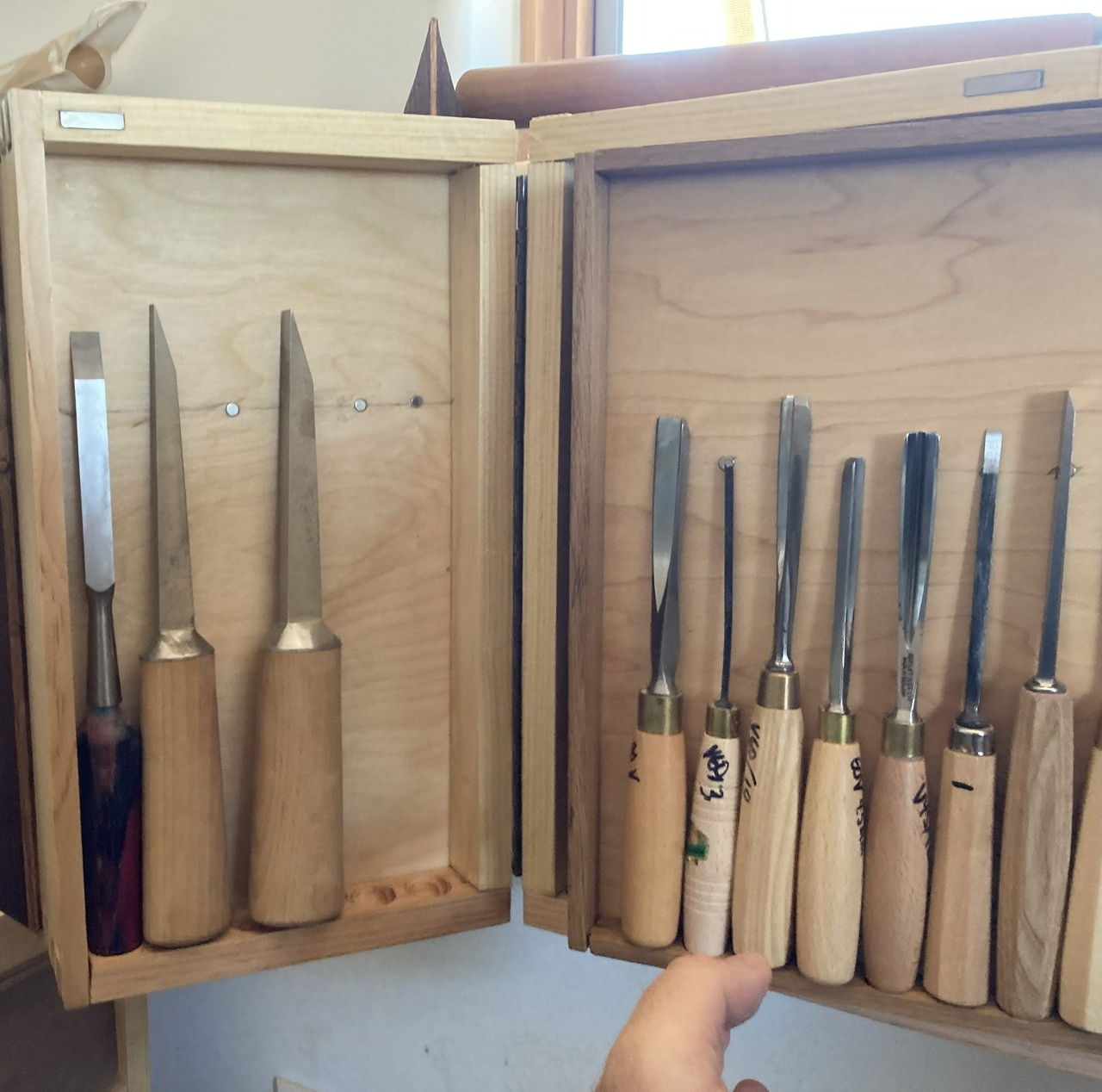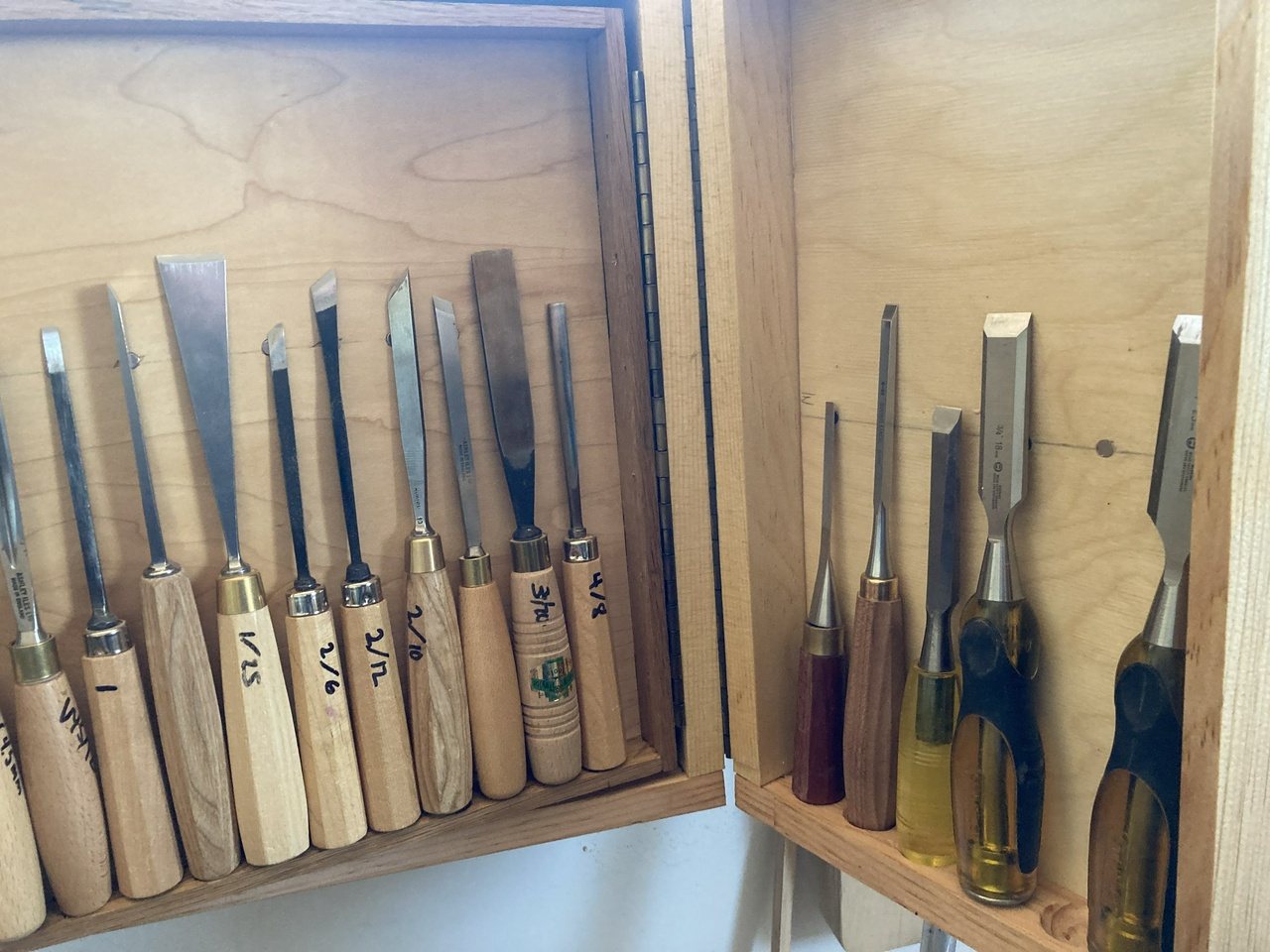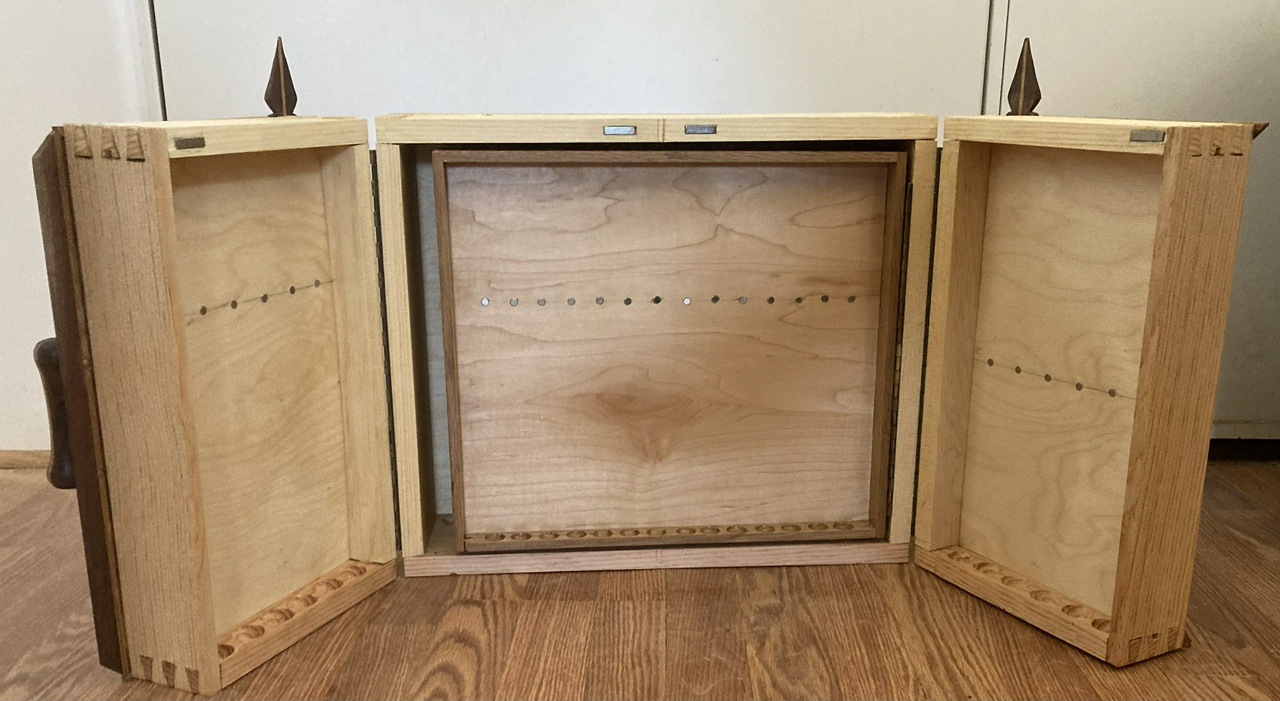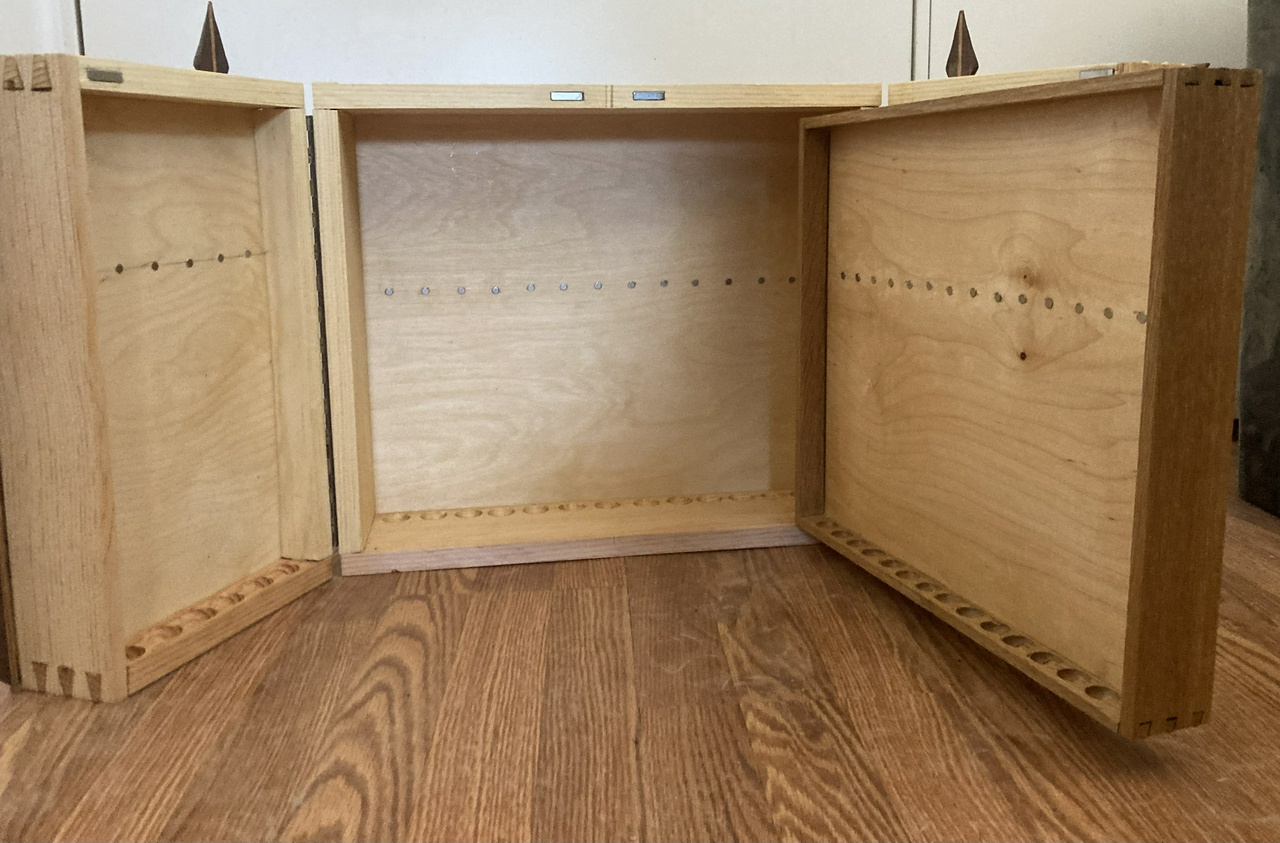Carving knife and sheath

I made a carving knife for myself recently. The handle is apple from a tree growing in my front yard in Minneapolis, with red Micarta, ash, and a brass pin to hold everything together.

The blade is a Morakniv 120 LC laminated carbon steel blade with the tang running full length through the handle.

The ash veneer matches the thickness of the tang, which makes construction easier. The pieces of apple I had were thin enough that I though some extra thickness from the Micarta would feel good and would also offer some contrast.

Once I had chosen red Micarta, I decided the sheath needed to match, so I ordered some red dye. The sheath is constructed in the traditional Scandinavian manner taught to me by my friend MaFe, with a wooden insert cemented into the leather to protect the leather from being cut if you insert the blade carelessly.

I’m happy with the knife and it will probably become my primary carving knife for a while.
Discuss... Reply to this in the fediverse: @davepolaschek@writing.exchange







